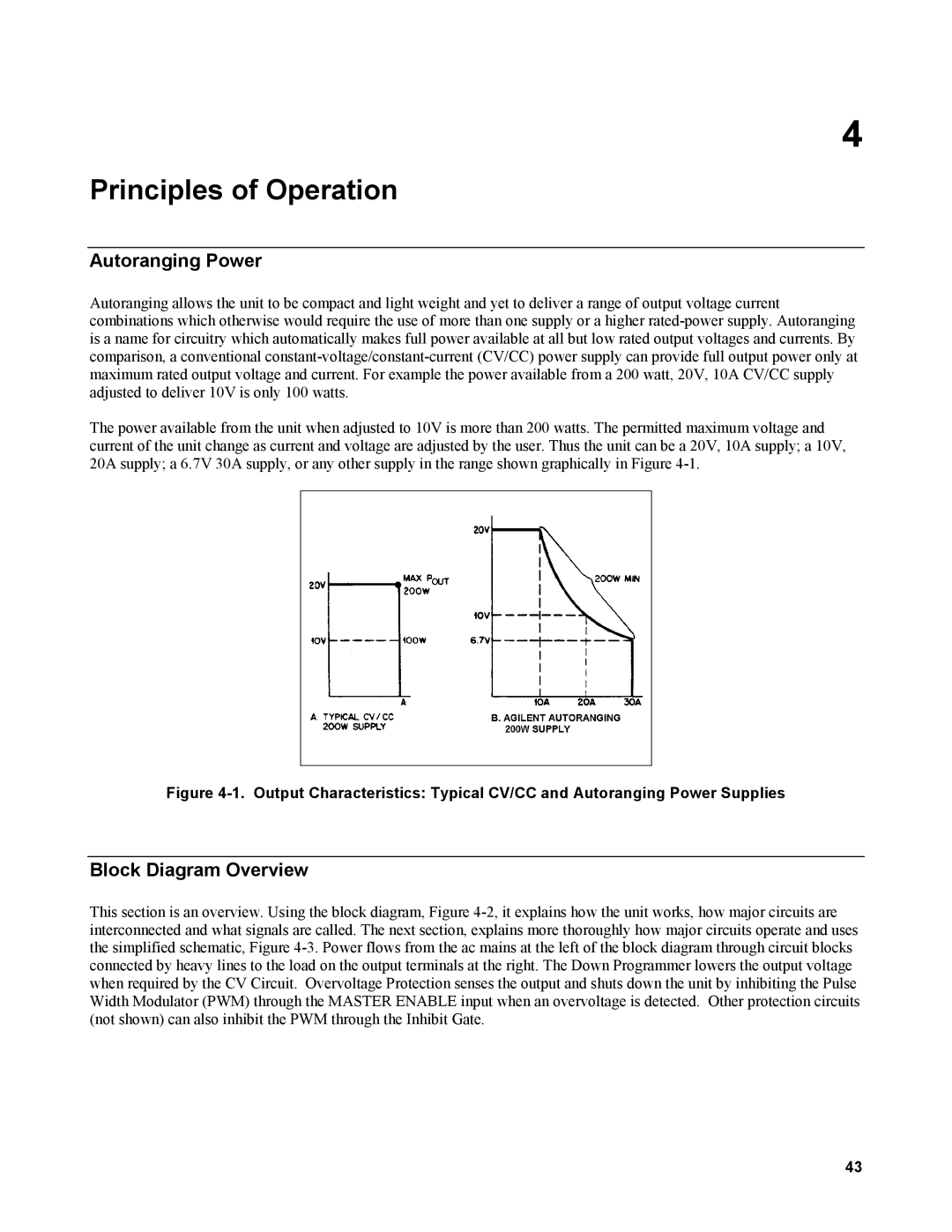
4
Principles of Operation
Autoranging Power
Autoranging allows the unit to be compact and light weight and yet to deliver a range of output voltage current combinations which otherwise would require the use of more than one supply or a higher
The power available from the unit when adjusted to 10V is more than 200 watts. The permitted maximum voltage and current of the unit change as current and voltage are adjusted by the user. Thus the unit can be a 20V, 10A supply; a 10V, 20A supply; a 6.7V 30A supply, or any other supply in the range shown graphically in Figure
Figure 4-1. Output Characteristics: Typical CV/CC and Autoranging Power Supplies
Block Diagram Overview
This section is an overview. Using the block diagram, Figure
43
